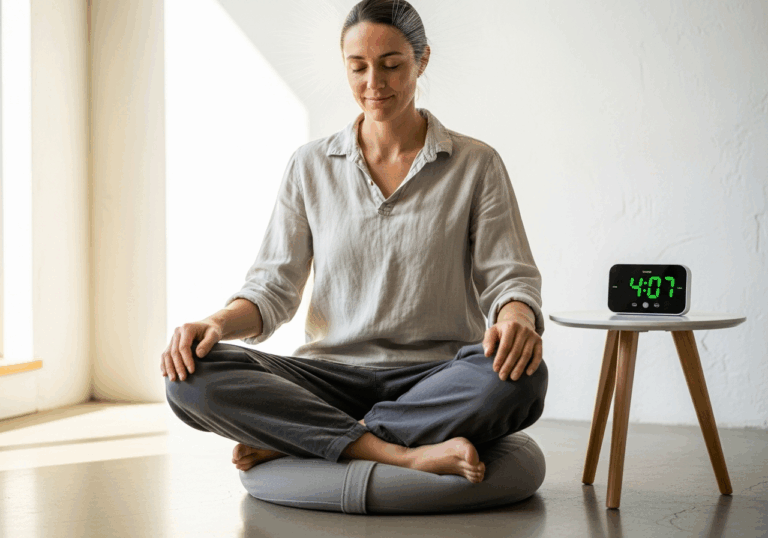Science-Backed Tips
Boost Your Mood with Heart Rate Variability Training
HRVB training can increase HRV RMSSD by 30% in 77 days.
📊 Did you know?
💡 Why It Matters
1️⃣
Improved HRV is linked to better emotional regulation, enhancing overall mental health.
2️⃣
A 30% increase in HRV RMSSD can significantly reduce negative emotions, improving quality of life.
3️⃣
Regular HRVB practice may lead to long-term emotional resilience and stability.
✅ Try These Micro-Tips
🎯
Practice HRVB training for 20 minutes daily to enhance mood.
🎯
Incorporate breathing exercises focusing on heart coherence for 10 minutes each session.
🎯
Track your RMSSD weekly to monitor progress and emotional changes.
🎯
Engage in mindfulness meditation for 15 minutes to complement HRVB training.
📚 The study
The findings highlight the importance of improved HRV as a predictor of mood uplift, suggesting that regular practice of HRVB can foster emotional resilience and stability.
By enhancing heart rate variability, individuals may experience better emotional regulation, ultimately leading to an improved quality of life. This study emphasizes that a consistent commitment to HRVB can yield long-term benefits, making it a valuable tool for those seeking to enhance their mental health and emotional stability.
As we navigate the complexities of modern life, understanding the connection between HRV and emotional outcomes becomes increasingly vital. The research serves as a compelling reminder that simple daily practices can lead to significant improvements in our emotional landscape, paving the way for a more balanced and fulfilling life.
❓ Frequently Asked Questions ❓
Learn more
What is HRVB training?
HRVB training stands for Heart Rate Variability Biofeedback training, which focuses on improving heart rate variability through controlled breathing and mindfulness techniques. It aims to enhance emotional regulation and overall mental health.
How does HRVB training affect mood?
HRVB training has been shown to increase HRV RMSSD by approximately 30%, which correlates with improved mood regulation. Participants often experience a significant reduction in negative emotions as a result of this training.
What is RMSSD and why is it important?
RMSSD stands for Root Mean Square of Successive Differences and is a measure of heart rate variability. Higher RMSSD values are associated with better emotional regulation and overall mental well-being.
How long should I practice HRVB training daily?
It is recommended to practice HRVB training for 20 minutes each day to effectively enhance mood and emotional resilience. Consistency in practice is key to achieving long-term benefits.
Can HRVB training help with anxiety?
Yes, HRVB training can help reduce anxiety by improving heart rate variability, which is linked to better emotional regulation. As participants experience a rise in RMSSD, they often report lower levels of negative emotions, including anxiety.
What additional techniques can complement HRVB training?
Incorporating mindfulness meditation for 15 minutes can complement HRVB training effectively. Additionally, engaging in breathing exercises that focus on heart coherence for 10 minutes during each session can enhance the benefits.
How can I track my progress in HRVB training?
You can track your RMSSD weekly to monitor your progress and observe emotional changes over time. Keeping a journal of your mood and emotional states can also provide insights into your development.
What are the long-term benefits of HRVB training?
Regular practice of HRVB training may lead to long-term emotional resilience and stability. Participants often report an overall improvement in quality of life due to enhanced mood regulation.
Is HRVB training suitable for everyone?
HRVB training is generally suitable for most individuals looking to improve their emotional well-being and mental health. However, those with specific medical conditions should consult a healthcare professional before starting any new training regimen.
How quickly can I expect to see results from HRVB training?
Participants in the study observed a significant increase in HRV RMSSD and a reduction in negative emotions over a period of 77 days. While individual results may vary, many people notice improvements in mood and emotional regulation within a few weeks of consistent practice.





